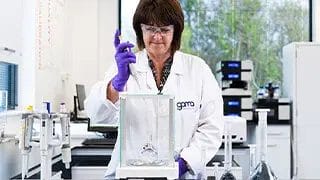Posted
8th March 2019
Research
Drs Stephanie Dancer and Alex Kramer, two of the biggest names in hospital cleaning and disinfection, have joined forces to write a review in the Journal of Hospital Infection, setting out four steps to clean hospitals. First LOOK, then PLAN, next CLEAN, and finally DRY.
The authors identified a gap in the literature: no articles offer a practical overview of how to clean a hospital bed space daily. So, the article aims to provide an evidence-based and ordered set of recommendations around achieving effective cleaning of a bed space.
The LOOK – The first step in the process is a visual assessment of the space to be cleaned. This needs to encompass temperature, smell, visible debris, clutter, space, lighting, patient status, and presence of clinical staff and visitors. The paper provides some helpful ‘real world’ images of how a cluttered bed space looks, and how this can impede the subsequent cleaning process.
The PLAN – Based on the visual assessment, how should the bed space be optimised for effective cleaning? This should include washing hands; re-aligning furniture, equipment and patient’s belongings for access; removal of litter, food, spillages, debris; and replenishing supplies if needed.
The CLEAN – The authors use the term ‘clean’ to encompass both cleaning and disinfection. This step is the ‘active’ step, but the other three steps are just as important in delivering an effective cleaning process. The article includes sensible advice about the rational use of disinfectants, and the use of disinfectant wipes – including advocating the GAMA ‘S’ shaped pattern for wiping (shown right).

The DRY – Perhaps the most underrated and understudied part of the process is drying. Wet surfaces introduce the risk of recontamination and biofilm formation. Therefore, surfaces should either be dried manually, or processes used that don’t require drying (such as the use of disinfectant wipes, which don’t ‘over-wet’ surfaces). This is the same principle as when decontaminating hands, where drying is a critical part of the process.
This review paper provides an evidence based ‘handbook’ for achieving effective cleaning and disinfection of bed spaces in hospitals. A clear focus on visual inspection of the bed space (the LOOK), careful consideration of the local application of the cleaning policies in the Trust (the PLAN), attention to the detail of the cleaning and disinfection activities themselves (the CLEAN), and not forgetting the need to leave surfaces dry afterwards (the DRY) will deliver a robust, repeatable, and effective cleaning process.
SHARE THIS ARTICLE
Tags
Latest News
News from the front line: GAMA Healthcare partners with leading Midlands Trust to enhance air quality across two sites
GAMA Healthcare is pleased to announce a significant investment from…
Celebrating 20 Years of GAMA Healthcare: Our Story
This month, GAMA Healthcare celebrates 20 years of helping prevent…
Norovirus: Understanding its transmission and prevention in the UK
Introduction Norovirus is recognised as the leading cause of viral gastroenteritis…
Clean Between to Reduce Healthcare-Associated Infections
Healthcare-associated infections (HAIs) are a significant concern for healthcare facilities…










